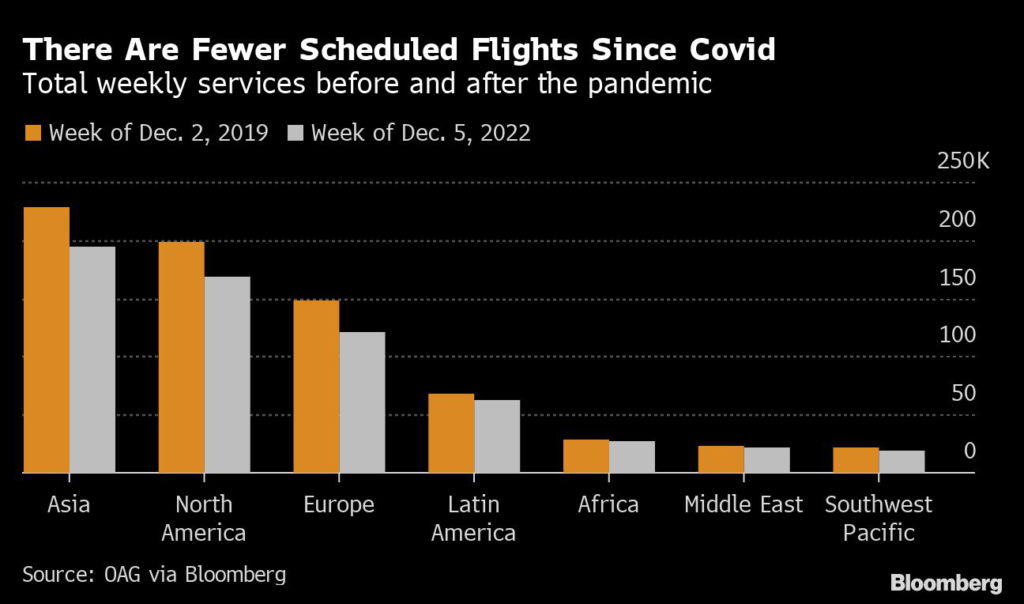The jet era that globalized air travel for half a century was brought to an abrupt halt with Covid. Now, planes are back in the skies but flying’s proliferation is in reverse: Fewer aircraft are plying a smaller network and fares are up.
(Bloomberg) — The jet era that globalized air travel for half a century was brought to an abrupt halt with Covid. Now, planes are back in the skies but flying’s proliferation is in reverse: Fewer aircraft are plying a smaller network and fares are up.
Thousands of flights each month have been wiped from schedules into major hubs including Singapore, London and Doha, Cirium data show. It’s more expensive to fly almost anywhere overseas. And while some markets such as the US are just about back to pre-virus capacity, swathes of Asia and Europe are wallowing more than one-quarter below 2019 levels.
A swift post-virus rebound in demand has overwhelmed an airline industry that has lost about $187 billion since 2020 under the weight of travel restrictions. Short of planes and crew, the sector has dropped more than 2,000 city-to-city connections that existed in 2019 and carriers are charging more for tickets on many routes. Air travel, the data show, is for the richer and the fewer.
“Flying has moved upmarket,” said Simon Kuestenmacher, Melbourne-based co-founder of advisory firm The Demographics Group. It’s further evidence that the pandemic has drawn a clearer line between the world’s economic winners and losers, he said.
Here are four charts that tell the story.
1. Ticket Prices
There’s so much appetite to travel that airlines have been able to more than double fares on some routes, particularly for business class seats.
“We have a genuine imbalance between supply and demand,” said Joe Leader, chief executive officer of APEX, a New York-based passenger experience association.
2. Flights Are Tougher to Find
There are fewer services in every region, making it harder for travelers to get on a flight that suits them or one that connects to an onward destination.
Globally, some 100,000 weekly flights have been scrubbed from pre-Covid schedules. The number of weekly flights in early December was 616,330, down 14% from 716,727 in the same period of 2019, according to data from OAG.
3. Connectivity
The smaller number of flights heading into major transit hubs has reduced social mobility. Cathay Pacific Airways Ltd. and British Airways, for example, are operating all 95 services from Hong Kong to London Heathrow this month, according to Cirium. In December 2019, there were 234 flights on the same route.
4. Getting Seats
There are also fewer seats to fight over on international flights, with airlines struggling to rebuild the fleets they boasted prior to the pandemic.
More stories like this are available on bloomberg.com
©2022 Bloomberg L.P.










